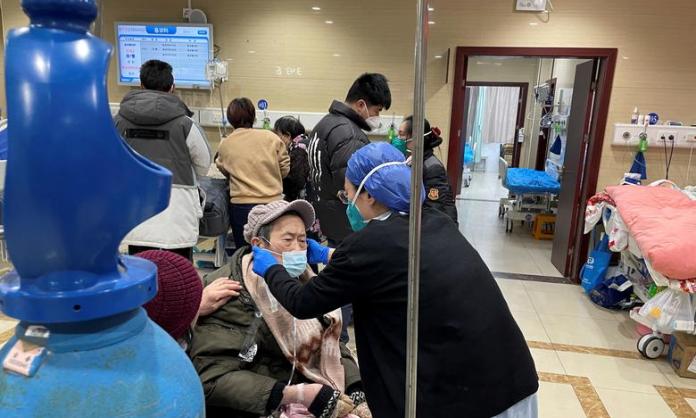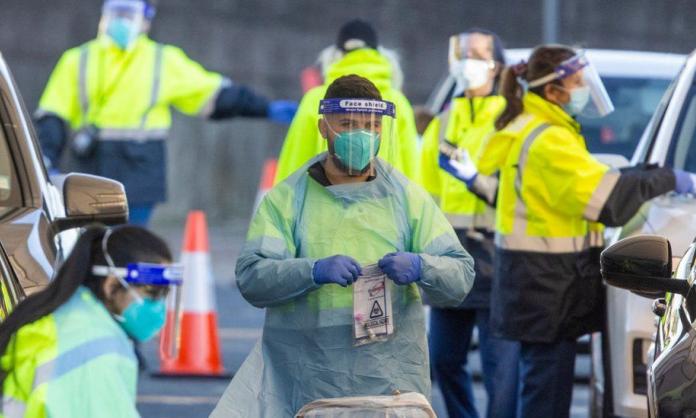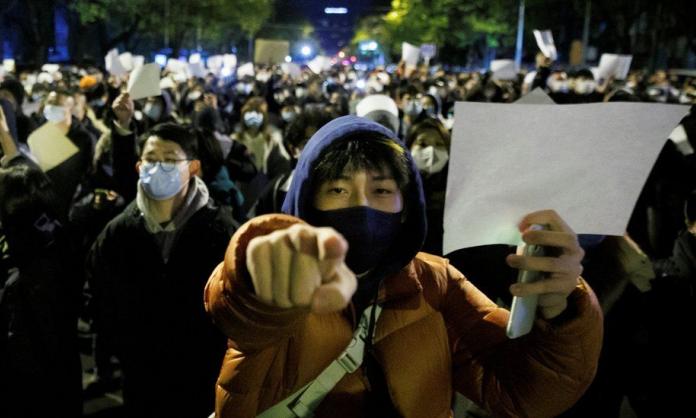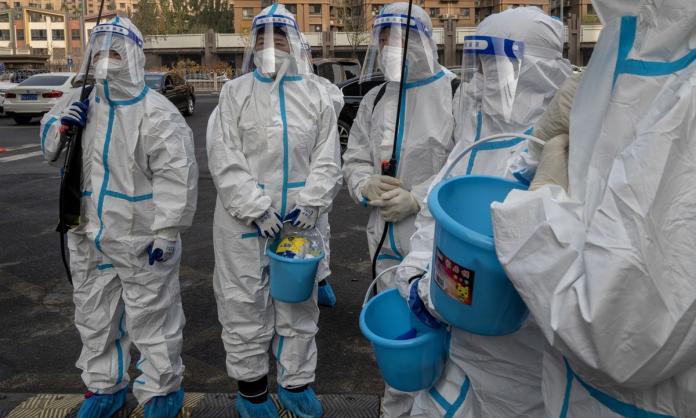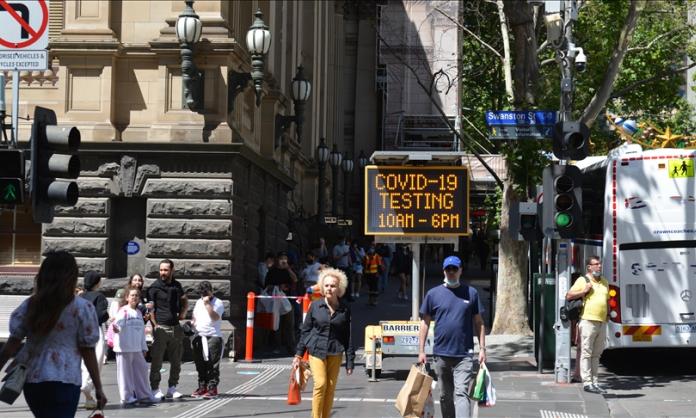In early January, the Victorian government suspended indefinitely all category two and three elective surgeries at public and private hospitals across Melbourne and major regional cities. This was announced on the same day that Ambulance Victoria issued a code red alert, meaning the ambulance system was under such stress that people seeking emergency services should expect delays and potentially seek alternate transportation to hospital.
These two events speak volumes of the compounding public health crisis that politicians, the business community and their advocates have forced on us and expect us to accept.
The Victorian government’s announcement came with the assurance that “all emergency surgery and urgent elective surgery will continue”, but those waiting for “non-urgent elective surgery” have been instructed to monitor their condition and contact a doctor if they notice deterioration. This has been made necessary, of course, because of increasing COVID-19 cases, about which governments everywhere are steadfastly refusing to take appropriate action to stop.
The human cost of this move is obscured by the government’s euphemistic language. The distinction between “urgent” and “non-urgent” elective surgery is not as clear-cut as it seems. The term “elective surgery” refers to most surgeries that are not emergency, that is, surgeries that are pressing and necessary but can be delayed for more than 24 hours without causing death or debilitating illness. Under the Australian national classification system established in 2012, they fall into three categories.
Category one procedures include things like major heart surgery, the removal of cancerous growths and other surgeries which, if not performed promptly, can lead to life-threatening emergencies. According to Australian clinical standards, category one surgeries should be carried out within 30 days.
Category two surgeries should be performed within 90 days and include things like heart valve replacements, treatment for un-ruptured brain aneurysms, spinal cord repair, ovarian cysts and unhealed fractures. Although not considered “urgent”, people awaiting category two procedures usually face significant pain or disability.
People waiting for category three elective surgery, meanwhile, may require hip or knee replacements, the removal of cataracts, or hysterectomies. 365 days is the maximum time they are clinically recommended to wait before being admitted to hospital.
As of last September, there was a combined total of just over 65,000 people on the category two and three waiting lists in Victoria, whose access to the health system is now in limbo.
And although category one elective surgery will continue for now, the Sydney Morning Herald spoke to senior healthcare workers who had been in communication with the government about surgery cancellations. They confirmed that the suspension of category one surgery was seriously considered––a decision they say would entail “devastating” consequences. The government has previously suggested that reaching 1,000 COVID-19 hospitalisations could prompt them to suspend more elective surgeries, a number that has now been surpassed.
It is not only in Victoria where this is happening. In order to create more capacity in under-resourced and under-staffed hospital systems buckling under the weight of widespread COVID infections, New South Wales, Queensland and South Australia have also imposed restrictions on elective surgery, with other states likely to follow. Nor is this the first time that state and federal governments have enforced such measures. In March 2020, at the very beginning of the pandemic, the National Cabinet set the precedent that elective surgery was expendable. States and territories have resumed and suspended it in cycles since. It has been used as “a tap that Government turns ‘on’ and ‘off’ to cover for serious cracks in our healthcare system,” as NSW Australian Medical Association President (AMA), Danielle McMullen put it.
The cumulative impact of these suspensions is predictable: more people are waiting for necessary surgery, for longer periods of time, with an increased risk of their conditions deteriorating. Data from the Australian Institute of Health and Welfare shows that, in the 2019-20 financial year, nearly 10 percent fewer people were admitted to public hospitals for elective surgery compared to the previous year as a result of the National Cabinet’s March 2020 decision. And people admitted for category three elective surgeries dropped most severely––with a decline of 18.4 per cent from 2018-19.
Similar patterns occur at a state level. Statistics published by the Victorian Agency for Health Information reveal precipitous growth in the number of people on Victorian elective surgery waitlists throughout the pandemic: the 49,426 people counted at the end of 2019 swelled to a shocking 64,998 by the end of 2020, and, as the most recent data shows, to 67,596 by the end of September last year. The vast majority of these are category two and three.
Wait times have also ballooned. While Victorians needing category two and three elective surgeries faced average wait times beyond what is clinically recommended of 115 and 131 days respectively at the end of September 2020, these figures jumped to 138 and 225 days a year later. So if you or your loved ones need, for example, surgery on an ovarian cyst (category 2), you may now be forced to wait more than 1.5 times the clinically recommended time.
It would be wrong, however, to assume that the pandemic alone created this parlous state of affairs. Well before the COVID-19 hit, the number of people added to elective surgery waitlists consistently outpaced the number of people admitted to hospital each year. According to the AMA’s 2020 Public Hospital Report Card, 2018-19 saw 893,031 people added to public hospital elective waiting lists nationally, while only 758,136 people underwent their elective surgery. An additional 100,000 names were removed from the waitlist, some of who will have died waiting for surgery.
Elective surgery wait times were also already unacceptably long. In 2018-2019, according to the same AMA report card, the median elective surgery wait time totalled 41 days. This was one day more than 2017-18, eight days more than 2008-9, and the longest average wait since 2001-2.
This gives us a glimpse into the strain the health system is under as a result of long-term funding cuts to public health, increased government handouts to private health insurers, and policies designed to coax dwindling numbers of people with means to shop around on the market for healthcare. But even these figures don’t reveal the full picture.
Official government data excludes people who need elective surgery but are yet to attend a specialist consultation to assess their medical condition. These appointments can take years to obtain, meaning that would-be elective surgery patients remain on separate—or “hidden”—waitlists exempt from public scrutiny.
So we can only estimate the true waiting times thousands of people are forced to endure for necessary medical procedures. The human cost, meanwhile, is clear. As AMA President Omar Khorshid notes, “there is likely to be a backlog of patients for whom urgent access to treatment will now be a requirement because the opportunity for early intervention has been missed”.
The reality is that waiting for “elective” surgery––necessary but not-yet life-threatening medical procedures––intensifies illness and often in devastating ways. The story of Luciano Ceciliot, a retired miner and sufferer of osteoarthritis, is a case in point.
As he recounted to the ABC, he has been waiting for surgery since 2011, when he first sought help for acute knee pain within the Queensland public hospital system. He was handballed between specialists for several years without any indication of when he would undergo the right knee replacement he desperately needed. By 2018, he needed a double knee replacement. And he’s still waiting for it.
So while the backlog of people across Australia awaiting elective surgery has risen qualitatively throughout the last few years due to pandemic-related delays, the situation in the public healthcare system for elective surgery patients was already frightful.
The pandemic has made the situation worse for those waiting for life-saving procedures, but it is also a disaster in another way—it has undermined the idea that the existence of a reasonably reliable healthcare system is a guarantee. Eroding the expectation that society and government will look after us when we’re sick or need help is something successive neo-liberal governments have tried and failed to achieve. The public revolt against former prime minister Tony Abbott’s notorious “ending the age of entitlement” budget in 2014 was an example.
The conditions created by the pandemic have the potential to fundamentally alter these assumptions, something that will be an opening for politicians to normalise a more brutal, anti-human healthcare situation like that in the US. Pre-pandemic healthcare was bad enough, so we can’t allow politicians to bludgeon us into accepting the disaster euphemistically referred to as “covid normal”.
As the AMA has been arguing for years, massive investment in healthcare is urgently needed, never more so than two years into a deadly pandemic. We are far, however, from the organised resistance required to win such reforms, let alone free, universal healthcare. But with the pandemic presenting the government and the capitalist class a prime opportunity to drive down public expectations about healthcare––whether it’s the ability to obtain a free COVID test, call 000 and have paramedics reliably come to your aid, or undertake necessary medical procedures within a clinically safe time frame––there’s never been a more important time to start fighting back.






